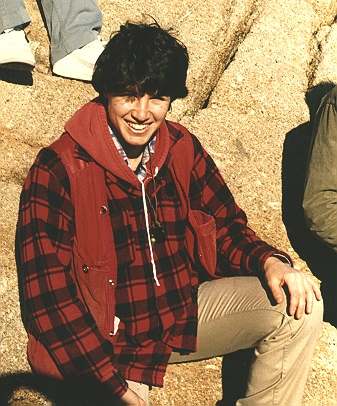Heather Plint

M. Sc. Thesis
Metamorphism of the Jumping Brook Metamorphic Suite, Western Cape Breton Highlands, Nova Scotia: Microstructure, P-T-t Paths, and Tectonic Implications
(PDF - 31.2 Mb)
Detailed mapping, petrography, and 40Ar-39Ar dating were carried out in the Cheticamp area of the Cape Breton Highlands in order to document the P-T and deformation history of the Jumping Brook metamorphic suite. This volcanic-sedimentary sequence shows evidence of a Barrovian prograde, regional metamorphism under epidote-amphibolite to amphibolite facies conditions. Metamorphic grade increases east-northeastwards through biotite, garnet, staurolite-kyanite zones. Peak conditions based on garnet-biotite geothermometry and garnet-plagioclase-kyanite-quartz geobarometry are 709o to 715oC and 7.5 to 8.0 kb. Calculated peak temperatures are consistent with zonation elimination in high-grade garnets and inferred mineral reactions. Nearly identical 40Ar-39Ar cooling ages on biotite (390 Ma + 4 Ma) and hornblende (383 Ma + 4 Ma to 389 Ma + 4 Ma) indicate rapid Devonian cooling.
Inclusion trail geometry, internal-external fabric relations, and relict matrix crenulations support the interpretation of syn-to post-tectonic porphyroblast growth during progressive crenulation cleavage development. Sigmoidal inclusion trails are interpreted as crenulation cleavage fold hinges. Porphyroblast overgrowth of different stages of crenulation cleavage development and other microstructures allow determination of a consistent relative growth sequence for the medium- to high-grade rocks: chlorite1, chloritoid, garnet1, staurolite, oligoclase and kyanite, garnet2, and chlorite2.
This crenulation is interpreted to be part of a continuous deformation sequence beginning with early, tight to isoclinal, macroscopic to microscopic folding about north-northeasterly trending axes and transposition of these folds along axial planar S1. Crenulations of S1 preserved by porphyroblasts may result from overthrusting although the exact geometry and cause of this thrusting is unclear. Differential uplift along northerly trending high strain zones can account for the observed metamorphic progression although the latter may partly reflect syn-metamorphic intrusions.
The P-T-(relative)t path derived using the established sequence of porphyroblast growth, inferred mineral reactions, and calculated pressures and temperature is characteristic of overthrust terranes. Comparison of this path to theoretical P-T-t paths generated by a one-dimensional, conductive computer model for overthrusting indicates that a thrust slab of 20 km and high heat flow can account for the observed peak metamorphic conditions but that exponential erosion alone does not account for the observed cooling ages. Based on the modelling results, the available isotopic data, and the geological P-T-t path, the Jumping Brook metamorphic suite is inferred to have been deposited no earlier than the Ordovician, overthrust while geologically young (< 100 Ma) around 430 Ma, obtaining peak metamorphic conditions at approximately 400 Ma and tectonically exhumed and rapidly cooled in the early Devonian.
Keywords:
Pages: 392
Supervisor: Rebecca Jamieson



